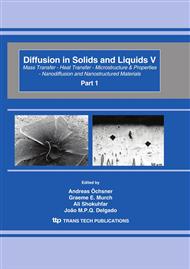p.402
p.408
p.413
p.422
p.427
p.433
p.439
p.444
p.450
Heat Transfer Enhancement of Jet Impingement on a Flat Plate Attached by a Porous Medium with a Center Cavity
Abstract:
Jet impingement heat transfer on a target plate covered with a thick porous layer with or without a cylindrical center cavity is experimentally investigated using the transient liquid crystal technique. Based on the results of jet impingement on a bare flat plate, heat transfer enhancement due to the attachment of porous medium is assessed. The varying parameters in the experiments include the nozzle-to-plate distance, jet Reynolds number, jet-to-cavity diameter ratio, and the cavity depth. Results of Nusselt number distribution, stagnation-zone Nusselt number, and averaged Nusselt number over a region of 3 times the hole diameter are documented. Experimental results show that the attachment of the porous layer with a center cavity can either hamper, or effectively enhance the jet impingement heat transfer over a flat plate. The maximum enhancement occurs at jet Reynolds number of 12400 when the cavity is a through hole and the cavity has the same diameter as the jet. The stagnation-zone Nusselt number increases 58.3% and the averaged Nusselt number increases 77.5% at the maximum enhancement condition. On the other hand, the addition of the thick porous layer without a center cavity gave rise to severe adverse effect on jet impingement heat transfer.
Info:
Periodical:
Pages:
427-432
Citation:
Online since:
April 2010
Authors:
Price:
Сopyright:
© 2010 Trans Tech Publications Ltd. All Rights Reserved
Share:
Citation:


